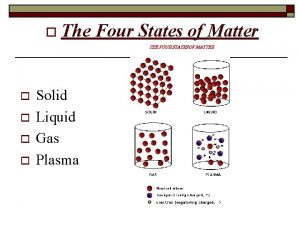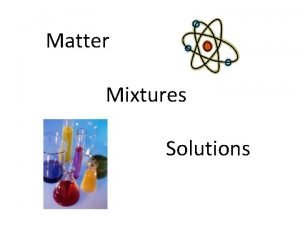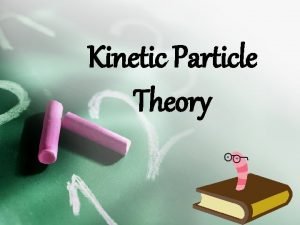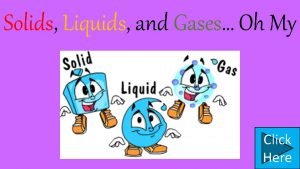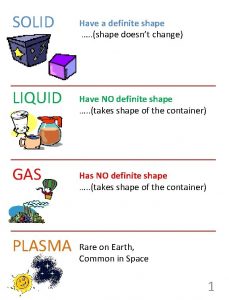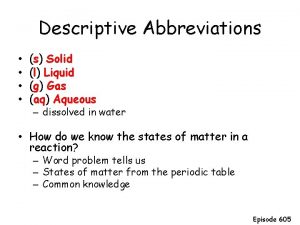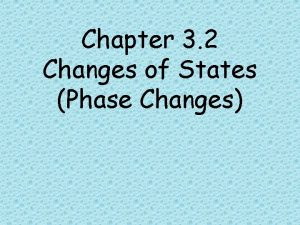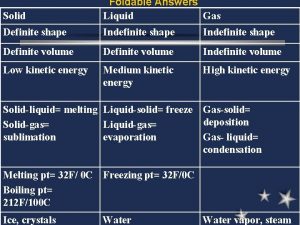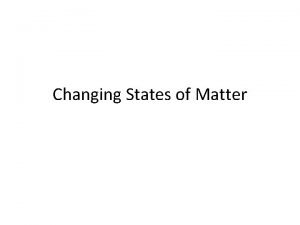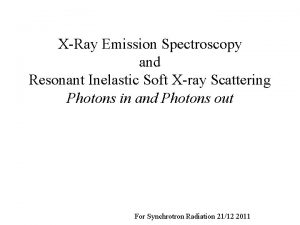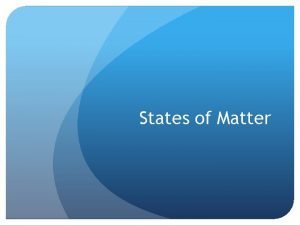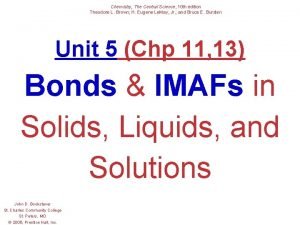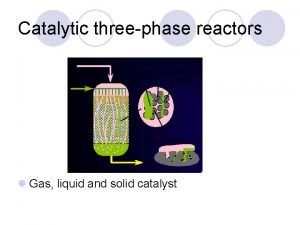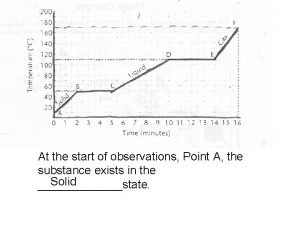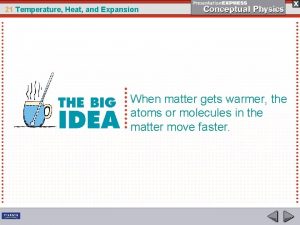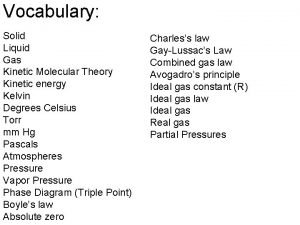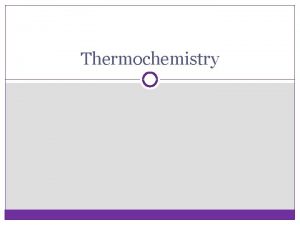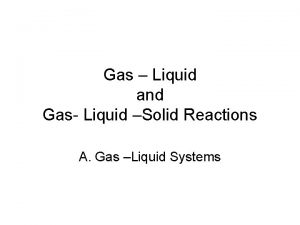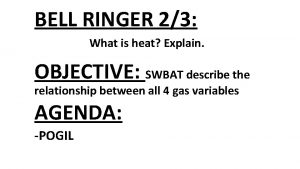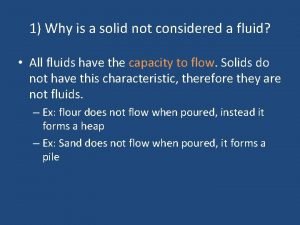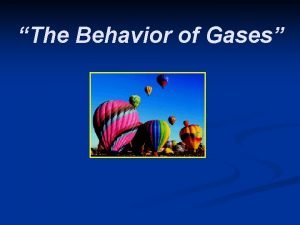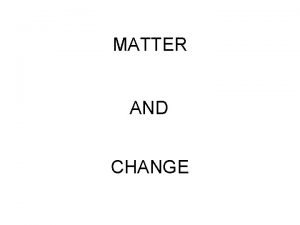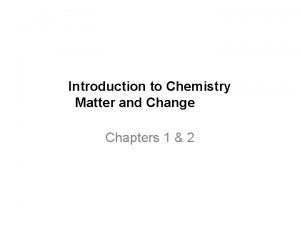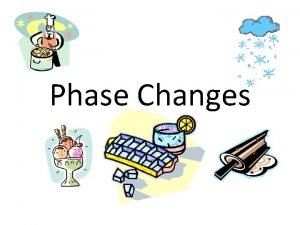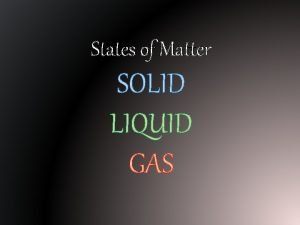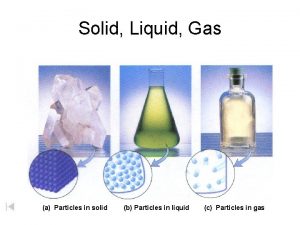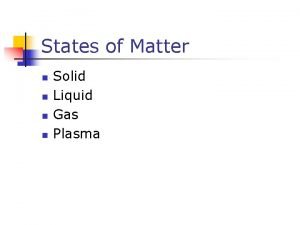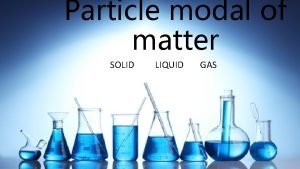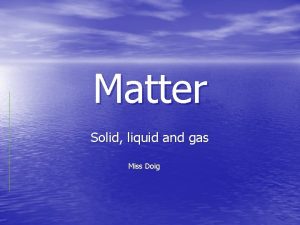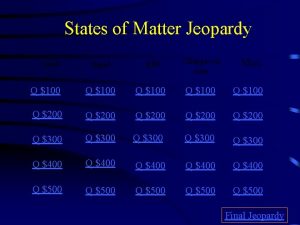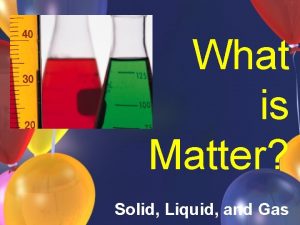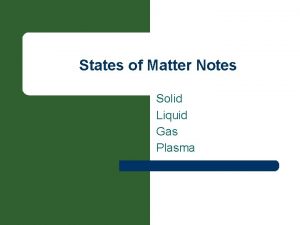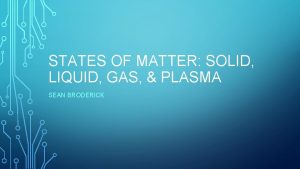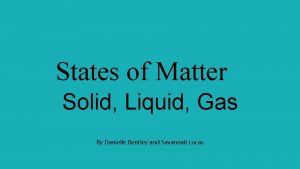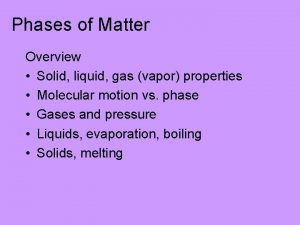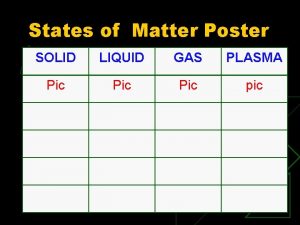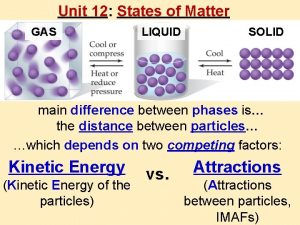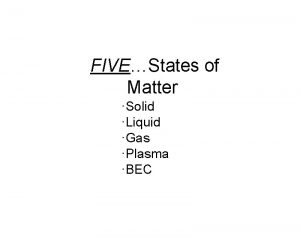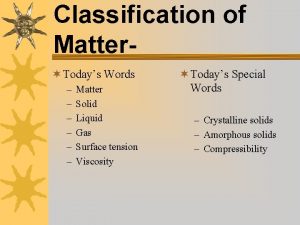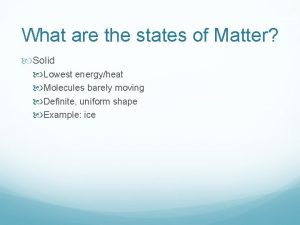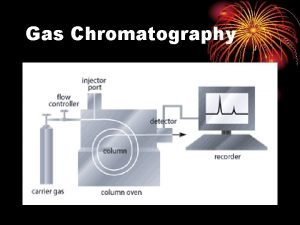Matter matters Solid Liquid Gas Lowest Middle energy





































- Slides: 37

Matter matters… Solid Liquid Gas Lowest Middle energy Highest energy state (particles vibrate in slide past freak out) place) each other) Definite No definite volume / No Definite definite shape

Matter matters… Matter Energy - Made of atoms - No mass - Has volume - No volume - Light/Sound/H - Has mass eat

Atoms

Just how small are we talking here? = 20, 000, 000, 000 Atoms If you tried to count to 20 sextillion, it would take you about 100 trillion years- and that is only if you counted very, very fast!

Just how small are we talking here? An atom is the smallest unit into which an element can be divided and still retain the properties of that element.

Here’s the thing, though The unit is called an amu, which stands for atomic mass unit. Atoms are actually so small that they themselves (and the stuff that makes them

The tiny particles that make up atoms are called subatomic particles (literally “below atom” particles)

Protons NAME Proton CHARGE LOCATION Positive (+) Inside Nucleus MASS 1 amu

Protons There are more than 114 different elements. Every element has a unique number of protons. Protons determine an element’s identity

Neutrons NAME Neutron CHARGE LOCATION Neutral (o) Inside Nucleus MASS 1 amu

Neutrons In nature, it is common to find atoms of the same element that have different numbers of neutrons. These are called isotopes.

Electrons NAME Electron CHARGE LOCATION Negative (-) Outside Nucleus MASS 1/1800 amu

Electrons can be found in the electron cloud which can also be referred to as energy levels. Neutral atoms have equal numbers of protons (+) and electrons (-). In one millionth of one second, electrons travel around the nucleus billions of times.

Electrons If an atom has unequal numbers of protons (+) and electrons (-), it is called an ion.

Mass and Volume of Atoms The electron cloud has the majority of the volume and almost none of the mass. The nucleus has almost no volume and has the majority of the mass.

Subatomic Particles and the Periodic Table that loved them… Elements are listed on the periodic table using their chemical symbols. Each chemical symbol is either a capital letter alone or one capital and one lowercase letter. H Ne Co

Subatomic Particles and the Periodic Table that loved them… What element is represented by the letters Na? What element is represented by the letter S? How many different elements are in this chemical formula: C 6 H 12 O 6

The number Atomic of protons in numbe an atom r Atomi c mass The average mass of an atom of an element based on the natural abundance of that element’s isotopes.

Mass Number is the total number of protons and neutrons in a given atom. If it is not given to you, you calculate the mass number for an element by rounding the atomic mass to the

Bohr Models Electrons are always spinning around the nucleus. They stay in general areas known as energy levels. Each level can only hold a limited number of electrons. first shell a maximum of 2 electrons second shell a maximum of 8 electrons third shell a maximum of 8 electrons

Bohr Models Electrons fill these energy levels from the lowest to the highest. The energy level must be completely full before moving on to the next level.

Bohr Models represent atoms by using circles to represent energy levels and dots or ‘x’s to show electrons. Nitrogen X X X 7 P 7 N XX X X N 7 14

Bohr Models Draw the Bohr model diagrams for the following elements: a) O 8 XX 17 b) 16 Cl 35 XX XX X X 8 P 8 N X XX X X 17 P X 18 N X XX XX X X

Valence Electrons in the outermost shell are special- they are called valence electrons. Valence electrons determine how reactive an atom is (also called its reactivity). In order to be a stable atom, an atom must have a filled outer shell. *Special Note* outer shell does not automatically mean the third ring.

Valence Electrons In nature, atoms are stable. To achieve this stability, most atoms must either: - Gain electrons (4 or more valence e-) - Lose electrons (3 or less valence e -) The closer an atom is to stability, the *Special Note* You cannot gain or lose protons- this changes element identity!

Valence Electrons Overall charge of an atom is determined by counting total protons and electrons. Equal numbers = Neutral Atom More p+ than e- = Positive Ion More e- than p+ = Negative Ion *Special Note* You cannot gain or lose protons- this changes element identity!











 Solid to plasma
Solid to plasma States of matter solid liquid gas
States of matter solid liquid gas States of matter concept map
States of matter concept map Arrangement particles of liquid
Arrangement particles of liquid Gas to solid examples
Gas to solid examples Solid liquid gas plasma
Solid liquid gas plasma Molecules of solid liquid and gas
Molecules of solid liquid and gas Venn diagram of matter
Venn diagram of matter Solid
Solid Pepsi mentos
Pepsi mentos Liquid short form
Liquid short form Why are gases eaiser to compress than solids or liquids?
Why are gases eaiser to compress than solids or liquids? Process of liquid to gas
Process of liquid to gas Solid liquid gas phase change
Solid liquid gas phase change Is the volume of a plasma definite or indefinite
Is the volume of a plasma definite or indefinite Graphic organizer properties of matter
Graphic organizer properties of matter Phase change concept map solid liquid gas
Phase change concept map solid liquid gas Gas liquid solid
Gas liquid solid The higher the amplitude, the _______the sound.
The higher the amplitude, the _______the sound. Solid liquid gas particles
Solid liquid gas particles Solid liquid gas difference
Solid liquid gas difference Thiele modulus equation
Thiele modulus equation Gas liquid solid
Gas liquid solid Gas liquid solid
Gas liquid solid Solid liquid gas particles
Solid liquid gas particles Solid gas liquid
Solid gas liquid Solid liquid gas
Solid liquid gas Multiphase reactor
Multiphase reactor Solid liquid gas
Solid liquid gas Liquid solid gas
Liquid solid gas Why are liquids incompressible
Why are liquids incompressible Are ideal gases compressible
Are ideal gases compressible Solid liquid gas particle model
Solid liquid gas particle model Volume solid liquid gas
Volume solid liquid gas Mass of solid liquid and gas
Mass of solid liquid and gas Liquid information
Liquid information Energy naturally flows from warmer matter to cooler matter
Energy naturally flows from warmer matter to cooler matter All states of matter
All states of matter
